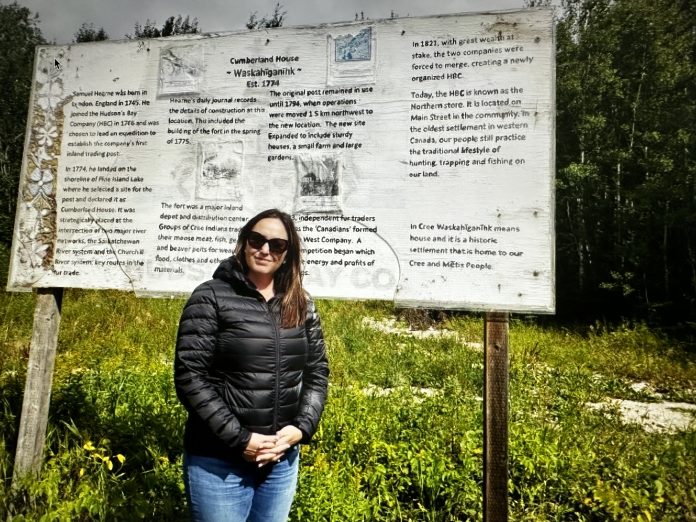
Valerie G. Barnes Connell Jordan
Northern Advocate
Dr. Allyson Stevenson (PhD) has plenty of roots in the Cumberland House area.
She moved to the area in 1998, served on the Kelsey Trails Health Board, which involved visiting the Cumberland House; and she has family members in both the Cumberland House Cree Nation (CHCN) and the Northern Village of Cumberland House, including her great-grandmother.
Stevenson is assistant professor in the Department of Indigenous Studies at the University of Saskatchewan (USask) and Gabriel Dumont Institute Chair on Métis Studies, so it is the perfect place for her to begin work on a “ground-breaking” project to bring together many aspects of the community to build and facilitate relationships between different organizations, community groups and researchers in a new way, digitally.
“They were looking for different ways to rebuild their museum, which they have since reopened,” Stevenson said in an interview with the Northern Advocate.
While her project is in it’s “early stages,” Stevenson has connected with the museum committee in the community and they have begun the journey to explore archival history, photographic history and more.
“There’s a lot of materials that exists in different sites across Canada, (and) actually the world, that were created in Cumberland or they contain really important historical information about the people of Cumberland House, like the ancestors of the current residents and their daily lives, their Indigenous names and family connections,” she explained.
One of the first places they’ve reached out to with the project is the Hudson Bay Company (HBC) “because of the strong presence the HBC had with Cumberland, being the first post there in 1774.”
Stevenson said the response to requests to form a relationship with the community and commit to “sharing resources directly” with not just the Museum committee, but the whole community in general, was “enthusiastic.”
That step is opening the door for building relationship with such entities as the Royal Saskatchewan museum and the universities of Saskatchewan and Regina. It also helps in finding people who are knowledgeable in the culture and crafts of the area, such as Métis beadwork, for example.
“It’s kind of like a digital archives,” Stevenson said. “We’ll have all those pieces in one space so people don’t have to have everything everywhere. It’s a starting place where people can find different items or information about historical people in the digital archives.”
Cumberland House is made up of the Cumberland House Cree Nation (CHCN) and the Northern Village of Cumberland House and includes Eastern Region 1 Métis Nation Saskatchewan.
“It is also home to the most amazing thinkers, artisans, local historians and knowledge keepers in the province,” Stevenson said in a USask press release dated Aug. 28.
Stevenson’s project received just under $2000,000 to fund a three-year project from the Social Sciences and Humanities Research Council (SSHRC).
“Stevenson and her collaborators are hopeful that this project may generate a museum tool kit and provide useful direction for other communities, who are looking to establish similar historical projects or integrate historical materials back to their communities,” reads the news release.
Stevenson said software developed in Australia is an important tool for the project.
“(It’s) been created with Indigenous communities in mind and protocols that are often required before accessing … and placing that in digital archives,” she explained. “It’s not always accessible in each community and each nation and has its own sort of requirements around who can listen and when and there’s other knowledge that needs to be sort of acquired prior to accessing the thing.”
It works as a sort of bridge to bring the knowledge together with the archives in a digital form, and “is a way that Indigenous communities can preserve their knowledge and their stories and songs,” she said.

